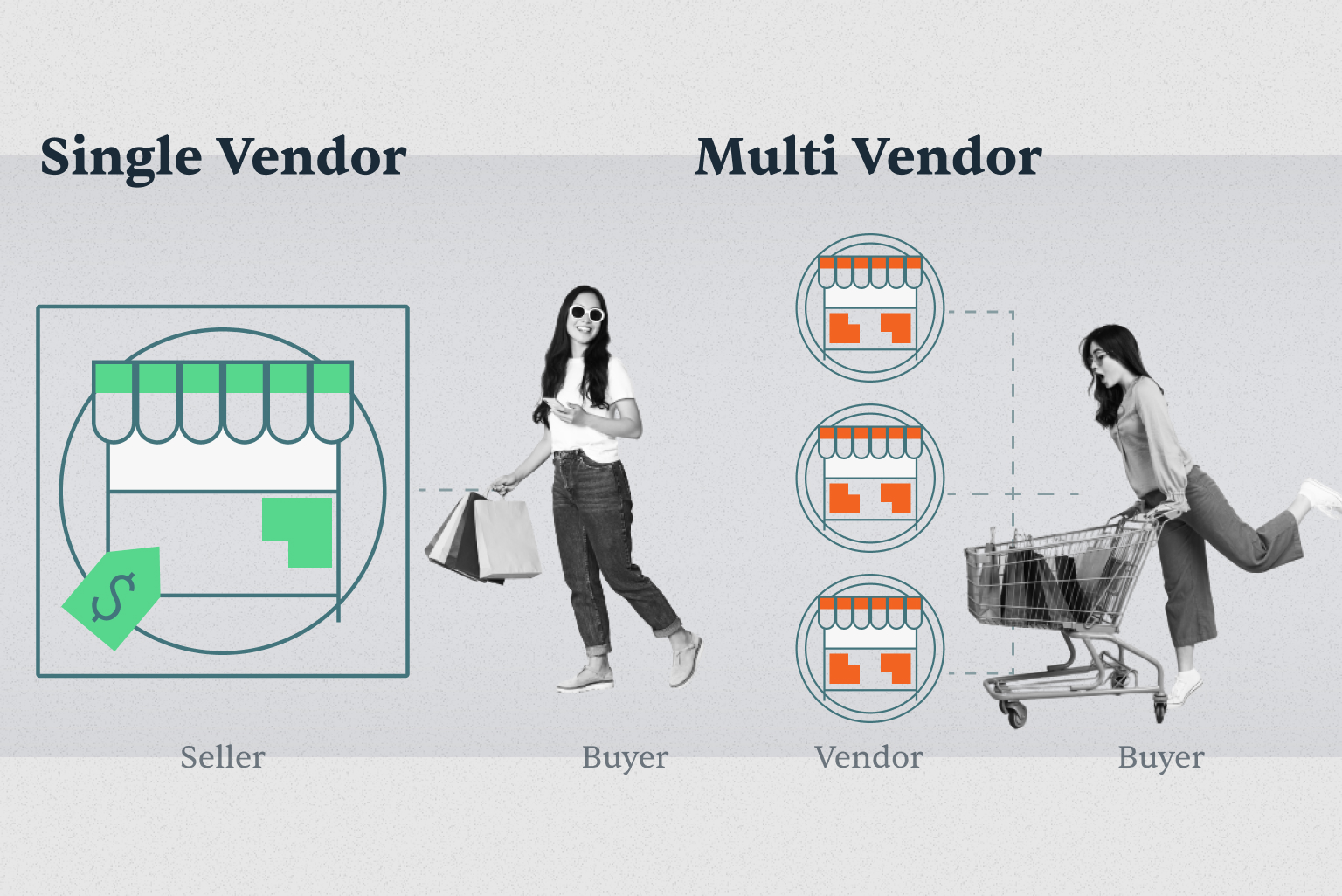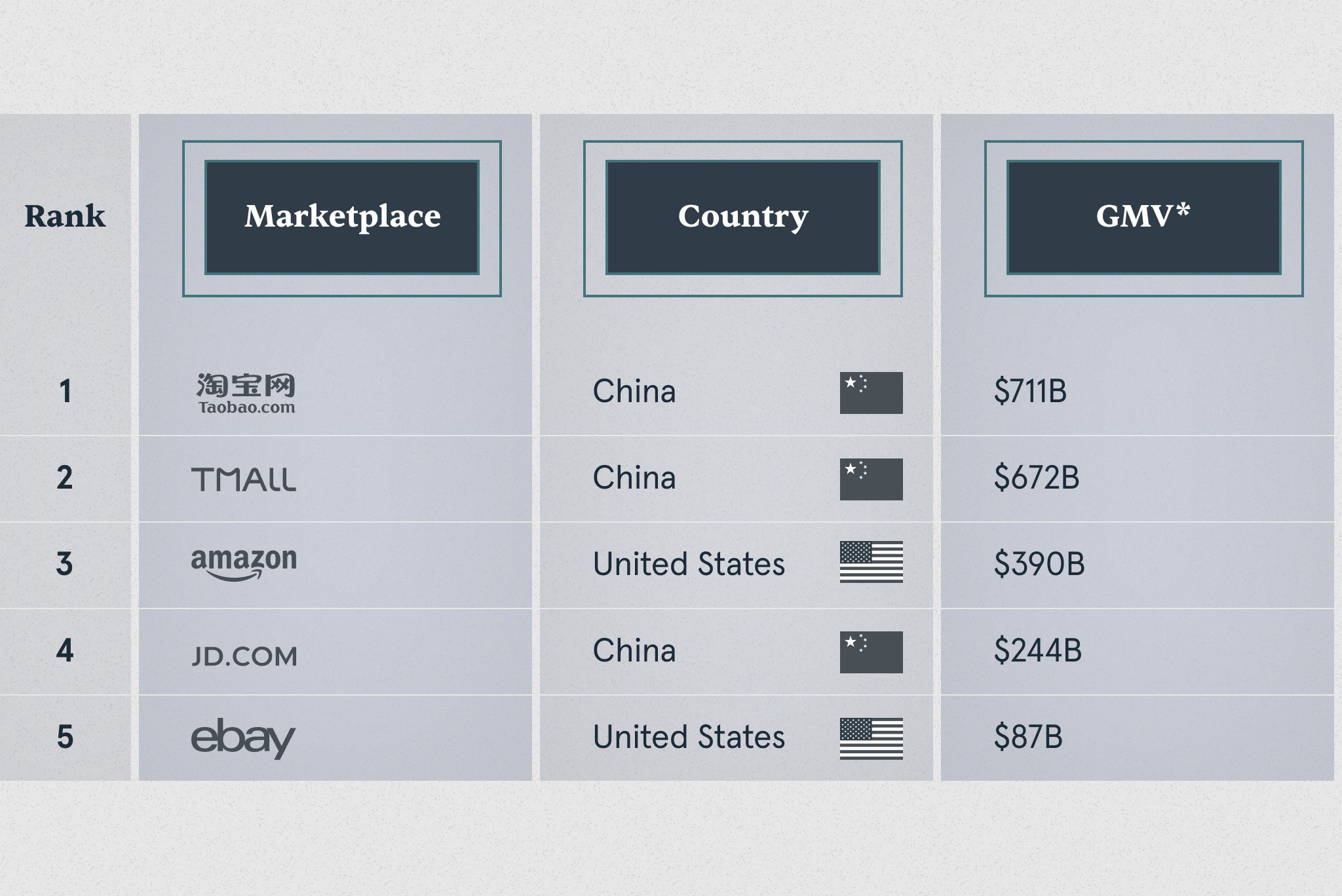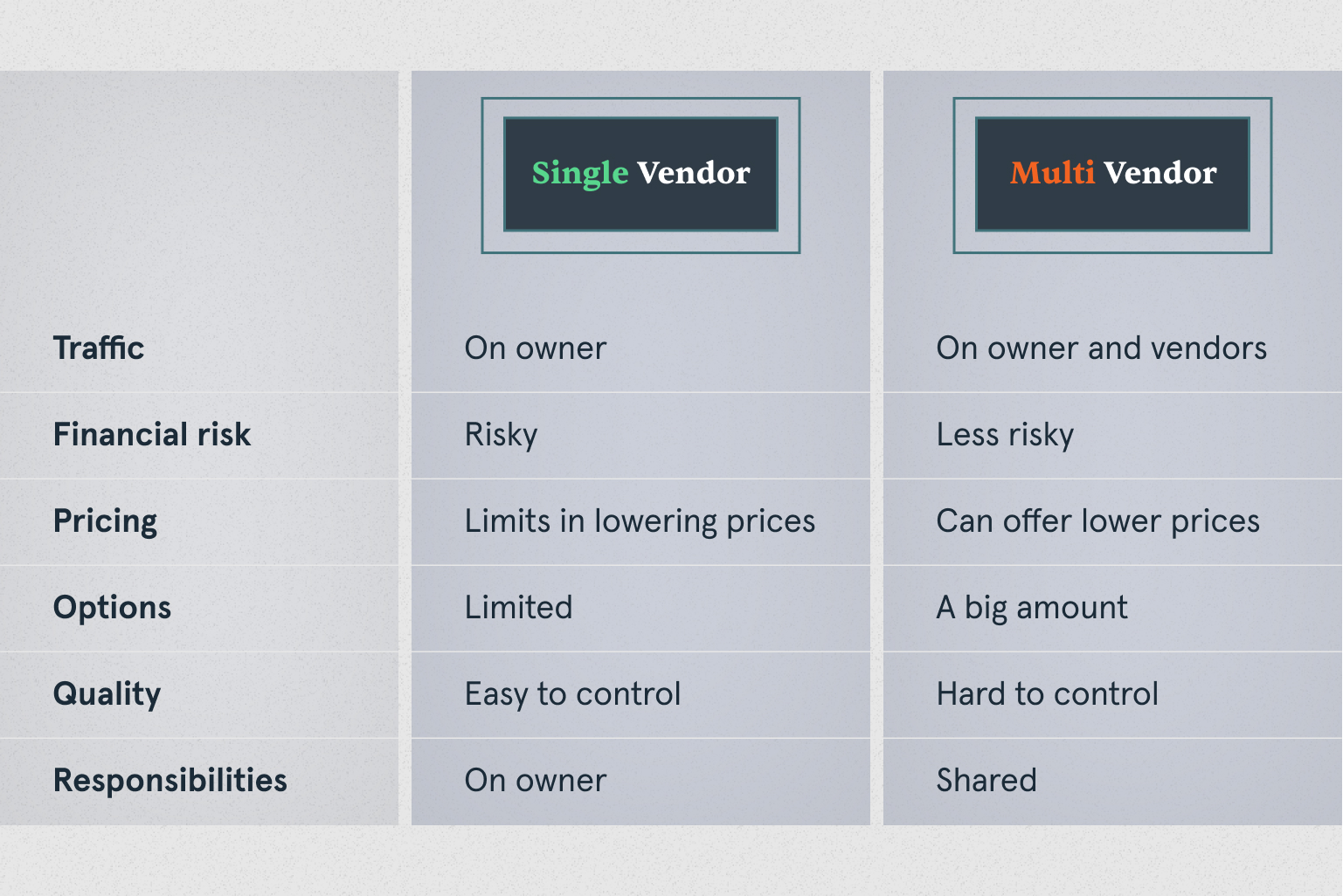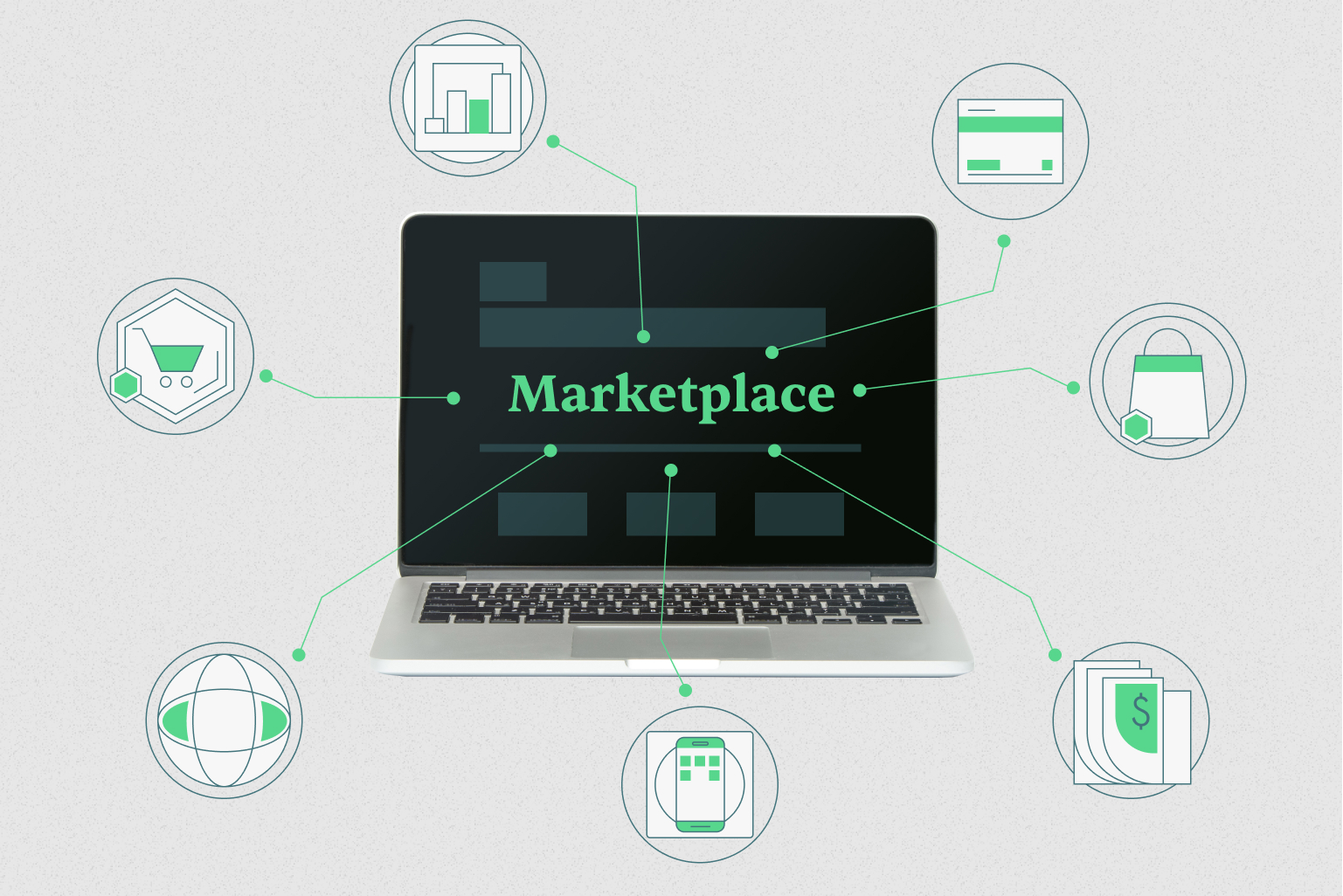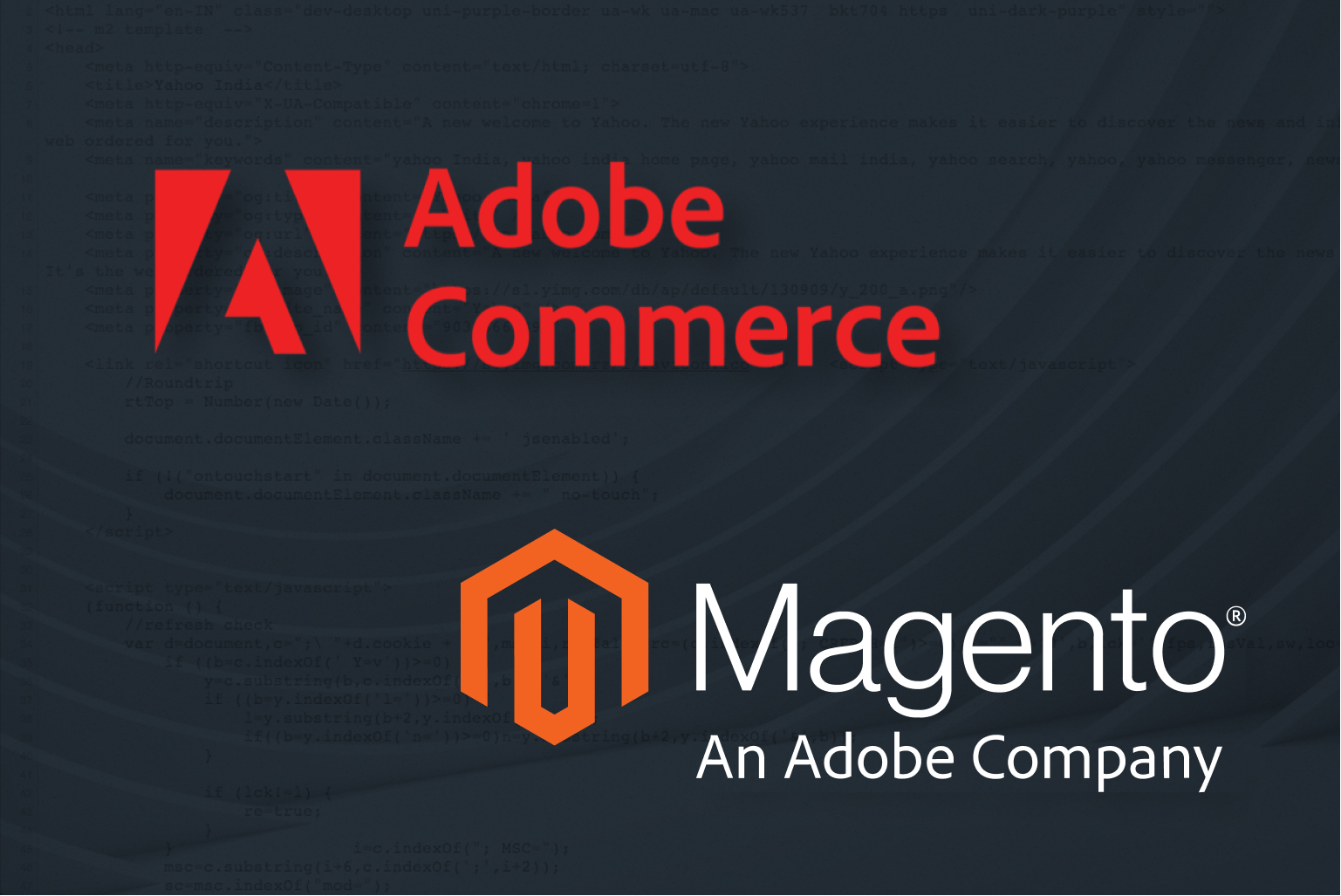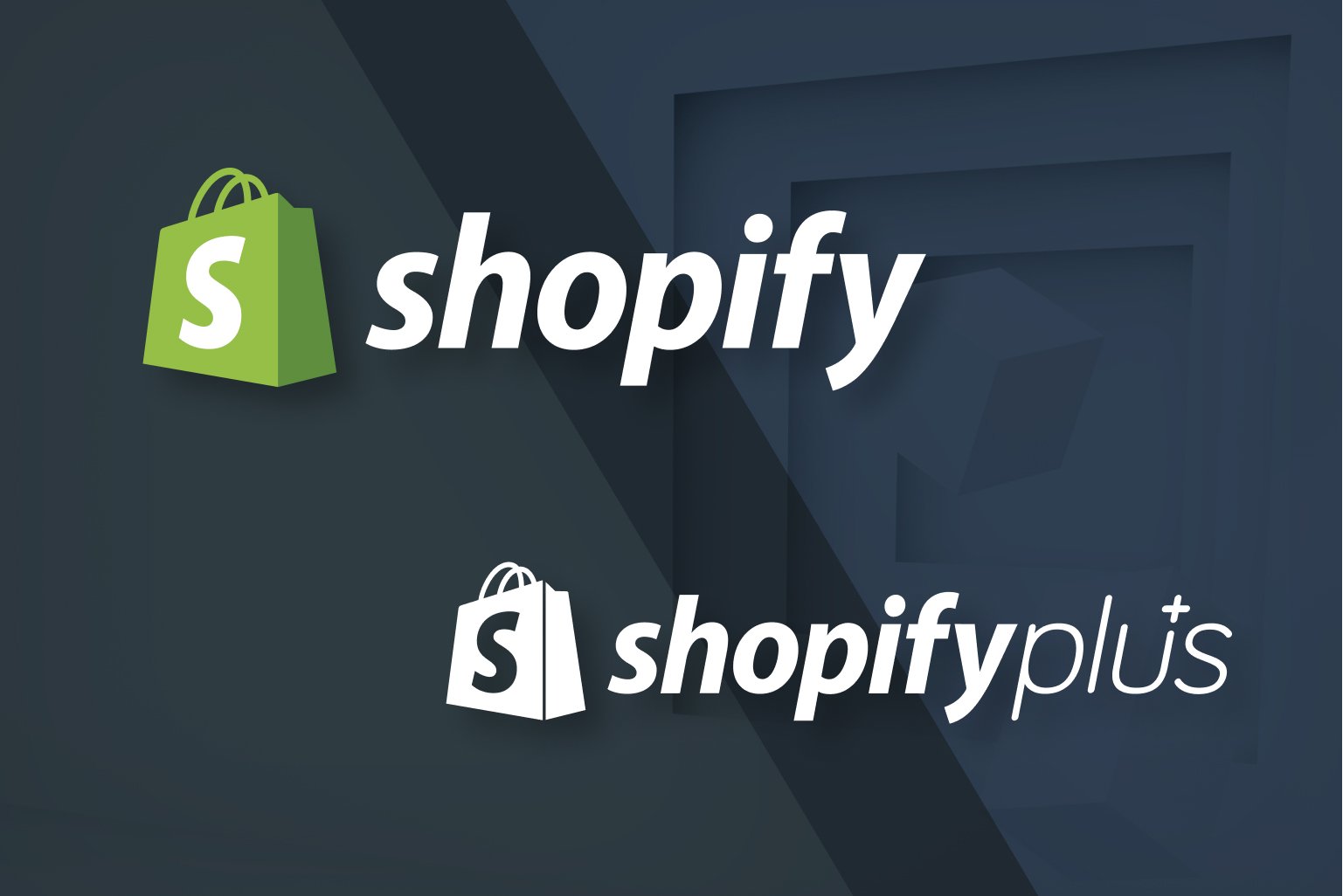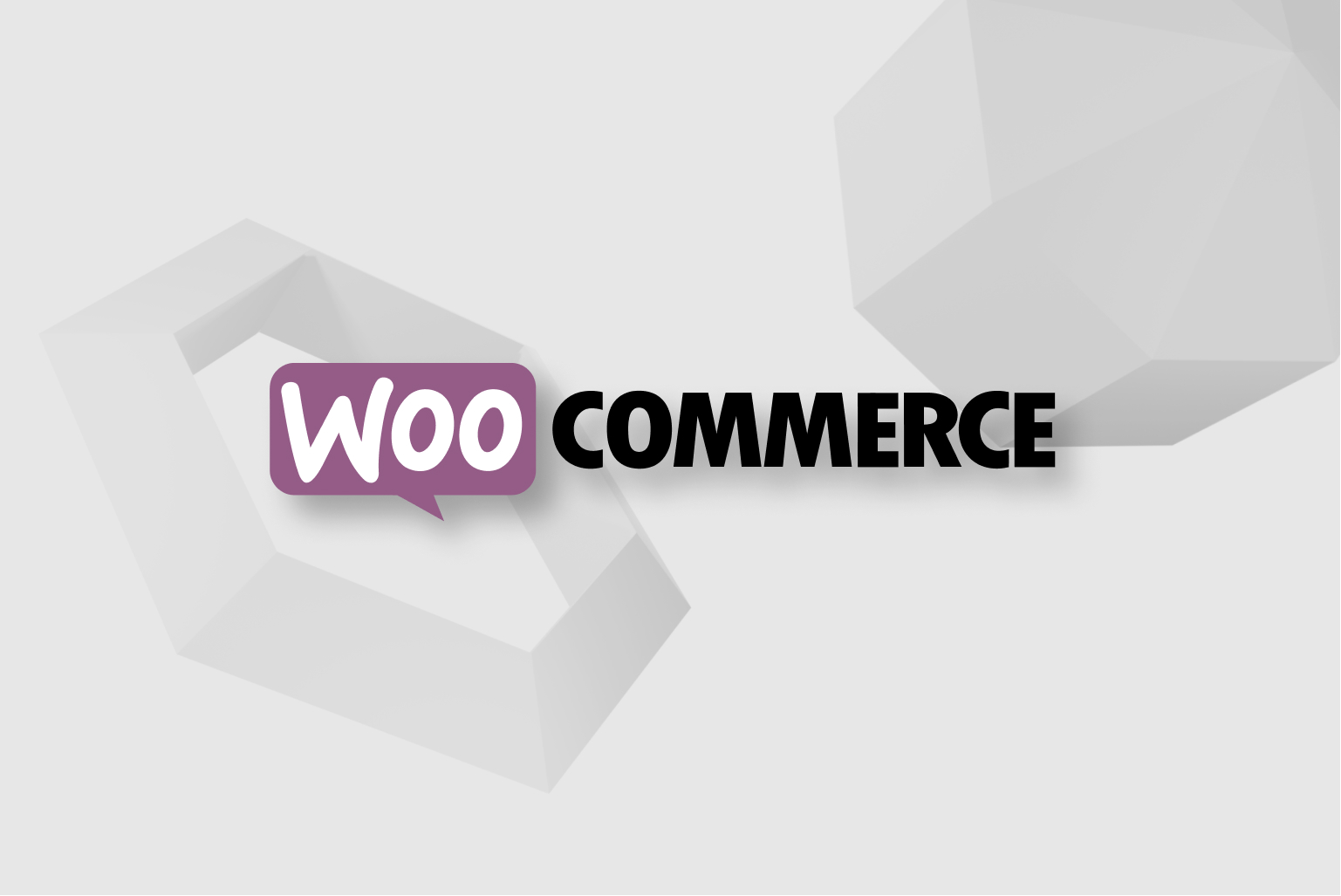So, you’ve decided to build a multi-vendor marketplace? Maybe, you even have ambitions to create the next ASOS or even eBay? Then you definitely need a great multi-vendor marketplace platform to fulfill your plan!
According to Statista research, there are over 2.14 billion digital buyers all over the world as of 2021, which is 90 million more than in 2020. Every year the numbers steadily rise, and no doubt they will continue growing. Marketplaces are extremely popular among online shoppers, and now is the best time to build one.
After reading this article, you will know:
- what a multi-vendor marketplace is
- what a marketplace software is
- features to look for in eCommerce marketplace platforms
- key factors to consider when choosing a multi-vendor marketplace platform
4 best marketplace platforms
What is a Multi-Vendor Marketplace?
A multi-vendor marketplace is a large eCommerce store where third-party merchants list and sell their goods or services. In comparison, a traditional eCommerce store provides products or services of a single vendor.
Zara’s website is an eCommerce store, and AliExpress (famous for selling Zara’s dupes) is a multi-vendor marketplace.
First marketplaces appeared in the 1990s, and since then, they have been getting increasingly popular among online shoppers yearly. The top 100 online marketplaces in the world sold $3.23 trillion in goods in 2021, according to Digital Commerce 360’s analysis.
The table below shows the most popular marketplace in the world in 2022
Multi-vendor marketplaces benefit all parties: marketplace owners, vendors, and buyers.
Beginner sellers who can’t afford to build their website get an all-set online store on the marketplace. Merchants who already have their website benefit from having a supplemental distribution channel, especially if the marketplace has better traffic than their website.
There are two main reasons why customers enjoy shopping on marketplaces. Firstly, it’s easier to arrange the purchases from different vendors in one place. Secondly, they get an opportunity to compare products and prices on one specific product provided by different vendors in one place.
Businesses that decide to build a multi-vendor marketplace face both benefits and risks. Let’s dive into them whilst comparing a traditional online store and a marketplace.
Traffic
Owners of a traditional eCommerce store have to do all marketing on their own, whereas marketplaces benefit from sellers driving the traffic to the website. However, it doesn’t mean owners don’t need to increase traffic at all.
Financial risk
Operating a multi-vendor website is less risky for owners. If they don’t sell their own products at all, they don’t store any inventory. Plus, only vendors lose money if customers return products, not the marketplace owner.
Pricing
Competition in marketplaces is tough. That’s why customers can find the best offering there, increasing the chances they will go to a marketplace rather than to a single merchant.
Options
A traditional online store has limits in terms of product variations, pricing, and quality options. That is what makes customers leave the website without placing an order if they don’t find what they want. A marketplace provides offers from different vendors in one place.
Quality
A single vendor directly controls the quality of your products or services. On the contrary, a marketplace owner can’t monitor every vendor, which results in reputation risks.
Responsibilities
Single vendor store owners have to manage all aspects of their business. In a multi-vendor marketplace case, all parties’ roles and responsibilities are defined.
Want to learn more about building a multi-vendor marketplace? Read our 15-step guide on how to make an online marketplace.
What is a Multi-Vendor Marketplace Platform?
A multi-vendor marketplace platform (aka marketplace software) is a tool designed for building a large-scale eCommerce store where third-party vendors can sell their products. This solution simplifies the whole process of launching and managing a marketplace.
Features to Look for in eCommerce Marketplace Platforms
Marketplace software providers offer a variety of built-in tools and features, both unique and common for the market. When choosing a platform, make sure it has the following features:
Marketplace admin experience
- An admin panel with role-based access where the marketplace admins can view sellers’ information and activity
- Manual and automated features for approving new vendors’ registration and already registered vendor’s activity
Vendor experience
- A registration form for new vendors
- A separate admin panel with role-based access where sellers can manage inventory, prices, orders, and shipping methods
- Sales and revenue analytics tools
- A seller’s shop page with company information and a full product catalog
- Expeditious vendor support
- Advertisement options
Multi-vendor product experience
- Product offering aggregation from different vendors on a single product page
- Simultaneous checkout with products from different sellers
Product data import
- Bulk importing products via CSV/XLS/XML files
- The ability for vendors to create their own product attributes
- No limitation of the number of listed products per vendor
- Support of different product types (simple, configurable, bundle, digital, and virtual)
Multiple payment models
- Commission fees (seller-specific, fixed, percentage-based, tiered, etc.)
- Subscription fees
- Freemium with paid features/premium
- Per-delivery fee
- Registration fee
- Listing placement fee
Payment processing
- Aggregated payments (customers’ payments go to a marketplace, then the marketplace keeps commissions and sends the rest to vendors)
- Direct payments (customers pay directly to vendors, then vendors pay commissions to a marketplace)
Order management
- Automated order invoicing
- Automated splitting of orders with items from several vendors.
- Return goods authorization (RGA)
- A back-order option
Mobile experience
- Mobile-optimized website
- A PWA adoption for offline mode and mobile app-like experience
Development Get a robust PWA
Supercharge your eCommerce efforts with superb UX and ‘superfast’ speed. Build an eCommerce PWA from scratch or save time and money using GoPWA Storefront.

Marketplace scalability
- Supporting multiple locations (languages and currencies)
- Possibility to increase the number of SKUs
- Open-source code for customization possibility
Integration
- APIs for marketplace integration with vendors’ systems like a PIM, OMS, etc.
Shipping management
- Automated email, messenger or SMS notifications about buyers’ products’ shipping status
- Multiple national and international shipping methods
- A possibility for sellers to choose shipping options to work with
4 Key Factors to Pay Attention to When Choosing Among Marketplace Platforms
Even though the marketplace software market offers plenty of great solutions, it’s still hard to select the one that is a 100% match for your business. There are some crucial factors you need to refer to when you are looking for the best marketplace platform:
-
Your final goal
The choice of a multi-vendor eCommerce platform primarily depends on your business goals. To define the final goal, you need to take into account the following: what products you are going to sell, what countries you are going to target, what marketplace business model you are going to choose, etc.
-
Scalability
If you expect your business to grow and expand in the number of vendors, SKUs, and locations, you need to make sure the marketplace software you’ve chosen offers unlimited scalability.
-
Customization capabilities
Out-of-the-box features are great. But what about some unique features? You should choose a platform that allows you to create new features, customize existing ones and add any functionality you need. It’s better to choose an open-source platform that you will be able to customize to our business needs and requirements.
-
Pricing formation
Different solutions charge businesses differently. For example, with Shopify, you need to pay a monthly subscription + a fee for all the payments received. Adobe Commerce and Adobe Commerce Cloud charge you with a yearly subscription depending on your revenue.
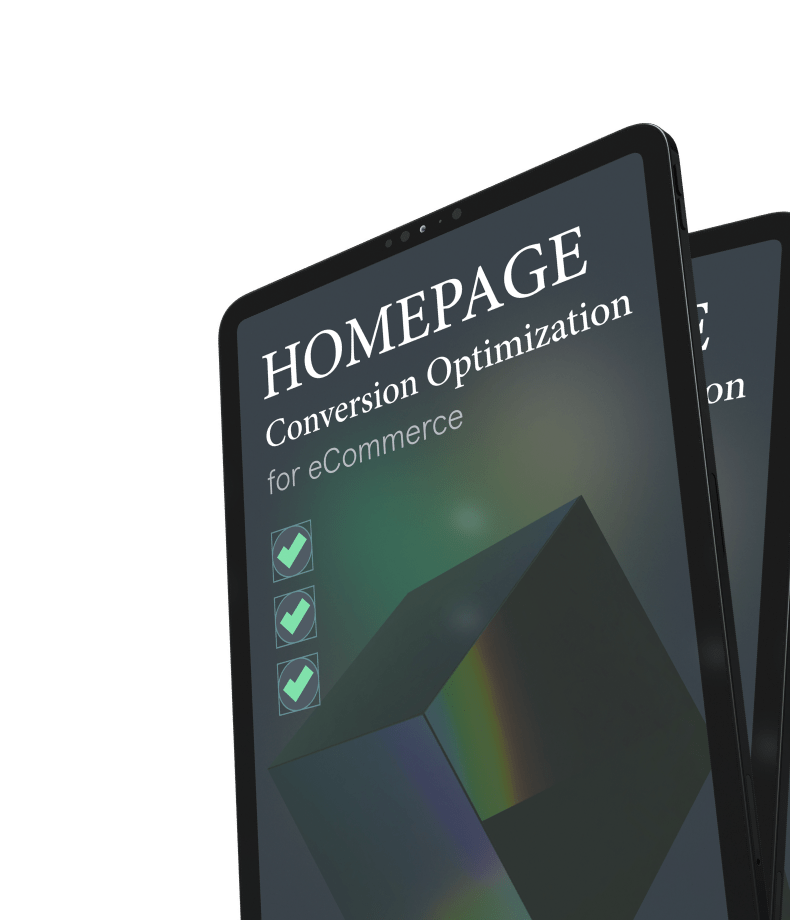
Multi-Vendor Marketplace Platform: Comparison of Top 4 Solutions
Now that you’ve decided on your goals and expectations from the marketplace software, it’s time to choose the best one for your business. There are many good solutions on the market today, but to make it simpler for you, we have determined the top 4 platforms that are worth adopting.
Adobe Commerce & Adobe Commerce Cloud
Adobe Commerce, also known as Magento, is an open-source marketplace software and one of the most popular systems among both single-vendor and multi-vendor eCommerce store owners.
Adobe Commerce’s integrated B2B functionality offers valuable features that skyrocket account management and ordering for both B2B and B2C models. This solution provides the following features:
- Self-manageable company accounts for sellers where they can set up role-based hierarchies, track orders, manage their credit online, and so on; shared catalogs that allow setting custom prices per product for different companies.
- Quick Order that speeds up the order process to several clicks and many more!
- B2B functionality lets Magento multi-vendor marketplace owners reduce costs on developing such crucial features.
Some other notable features of this multi-vendor eCommerce platform are:
- Flexible commission system
- AI-based Live Search
- Quick automated approval of products uploaded by vendors
- Page Builder – a drag-and-drop tool
- Role-based admin access for a seller’s dashboard
In addition to the aforementioned features, Adobe Commerce has some more crucial benefits:
- Unlimited scalability – with Adobe Commerce, you don’t need to worry about hitting a glass ceiling when your business grows.
- Unlimited customization capabilities – all the features of the platforms are customizable. You can change existing ones or create new ones from scratch. It’s also possible to install various modules to add new functionality quickly and with no huge financial investments.
- A lot of built-in features – out-of-the-box features allow you to quickly set up a marketplace without investing millions of dollars in creating a CMS platform from scratch.
- Regular security and quality updates – Adobe Commerce makes sure your business is secured and satisfied with the quality of the platform’s services.
- Regular functionality updates – the platform is constantly working to improve its features.
- No limitations regarding products that you can sell – your marketplace can sell anything as long as the products are legal.
From our own experience, there are a few reasons why eCommerce companies choose this multi-vendor marketplace platform.
First and foremost, its customization capabilities. Almost no other platform on the market can hold ground when compared with Adobe Commerce. A lot of what you get with the platform out of the box, you need to find workarounds with Shopify Plus. Even if you find how to add the required functionality with third-party apps, their customization is quite limited, if possible at all.
A great example is an automatic lookup of an address that you can add to the Adobe Commerce store and have no option to add to a Shopify store.
The ability to build progressive web applications is another reason why more and more companies are choosing Adobe Commerce. Even if you don’t invest in its development right away, you can always perform PWA migration, enjoying a smooth transformation.
If you are not ready to invest heavily in Adobe Commerce or Adobe Commerce Cloud, you can always start with Magento Open Source and seamlessly migrate to the paid version when ready. We can also help you choose the most suitable version for your business with the best conditions from Adobe.
Adobe Commerce сomes in three versions:
- Magento Open Source – a free open-source version
- Adobe Commerce – a paid self-hosted version
- Adobe Commerce Cloud – a paid hosted version
Learn more about Magento Commerce Features and Magento extensions
Shopify & Shopify Plus
Shopify is a SaaS platform for both single-vendor and multi-vendor eCommerce stores. Shopify is the most known eCommerce platform thanks to its simplicity and flexibility. You don’t need to be a technical specialist or hire one to set up a store yourself. Shopify provides plenty of features, plugins, themes, and apps. With the help of the Shopify Multi-Vendor Marketplace app, it’s easy to convert a single-vendor store into a marketplace.
The eminent features of Shopify are:
- Centralized admin panel
- Product Expiry app
- Seller Shopify Store Connector app
- Seller Time Slot Management app
- 24/7 customer support
Shopify has three premium plans and one Shopify Plus for high-volume businesses.
It’s important to note that Shopify doesn’t provide as much scalability and customization as Adobe Commerce. It’s definitely one of the best eCommerce marketplace platforms for small and middle-sized businesses, but not for big and enterprise ones.
Shopify Plus is mainly designed for relatively straightforward businesses operating in the B2C segment. It’s a great solution if you need to launch a new store quickly and don’t need some specific functionality, and are sure that the out-of-the-box features will cover all your business needs.
At the same time, Shopify forbids selling some types of products, including guns, alcohol, vapes, ammunition, pharmaceuticals, cannabidiol, fireworks, and solvents. Shopify, being a SaaS platform, can change the rules of the game at any time, and you’ll find yourself cut out of the business.
Want to learn more about Shopify Plus and Magento differences? Read our article Shopify Plus vs. Adobe Commerce: Which One is Better in 2022?
WooCommerce
WooCommerce is an open-source plugin for WordPress. It is free, but users must pay for a domain name, web hosting, and SSL certificate.
Like Shopify, you need a multi-vendor marketplace extension, such as WC Vendors or Dokan, to turn your store into a marketplace. Note that WC Vendors is a paid one.
WooCommerce is a great option for small to medium businesses with no ambition to conquer the market. It’s great for first-time users, though it may require some ground knowledge in coding.
This marketplace software requires adding a lot of extensions and plugins, which are not always free. Some of them may conflict with WooCommerce functionality and other extensions since third-party developers create them.
The best features in WooCommerce are:
- WordPress themes and plugins support
- Auto-approval for the products
- WooCommerce mobile app
- Favorite seller marking
While WooCommerce is free, some marketplace plugins are paid.
Salesforce Commerce Cloud
Salesforce Commerce Cloud is a SaaS eCommerce platform for medium and large businesses. This multi-vendor eCommerce platform has powerful AI-based features such as automatic search, customer behavior insights, product recommendations, and so on.
Salesforce Commerce Cloud offers a decent variety of features, plugins, and tools, but as a SaaS system, it provides limited access to customization.
Some of the key features of this marketplace software are:
- eBusiness Manager
- Targeted promotion management
- B2B and B2C features
- Storefront Reference Architecture.
- Customer- and segment-specific pricing
Salesforce Commerce Cloud comes in two editions: Salesforce B2C Commerce and Salesforce B2B Commerce.
The Best Marketplace Platform: Making the Right Choice for Your Business
Choosing the best marketplace software for your business is a challenging mission. Every platform mentioned above has its strengths and weaknesses. However, Adobe Commerce stands out among its competitors for its customization capabilities, open-source code, PWA-friendliness, and other features. If you have ambitious plans for your future marketplace and a budget to grow your business, why not adopt the market’s best option?


